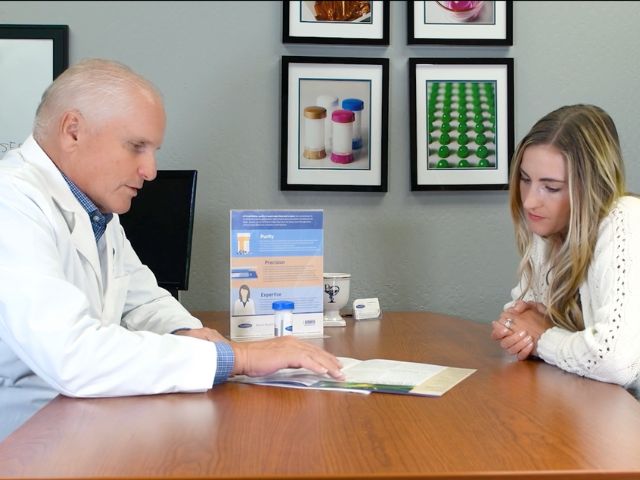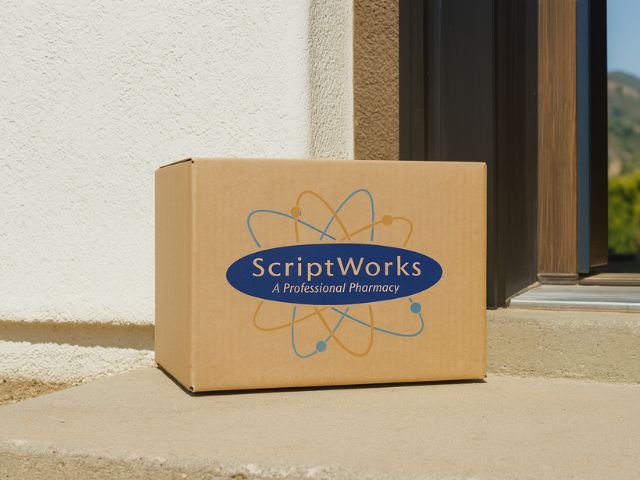
Author: Bob Brensel | President, Pharmacist | ScriptWorks
Bob Brensel, RPh, earned his Pharmacy Degree at University of the Pacific in Stockton, California in 1980. Former California Pharmacists Association’s Award Winner for Recognition of Outstanding Achievement in Compounding Pharmacy. Read More →
From Napa to the North Bay — Hormonal Health with Northern California Lens
If you’re a woman living in Northern California — maybe navigating your day between early-morning fog in Marin, a hectic shift in Sacramento, or school drop-offs in Walnut Creek — you know that life moves fast. But sometimes, your body doesn’t follow that rhythm. Fatigue creeps in. Cycles shift. Sleep feels just out of reach. And the mood changes? They’re not always easy to explain.
That’s where hormonal balance comes into the conversation — and why many Northern California practitioners have turned to progesterone 150-mg slow-release (SR) capsules as a part of personalized care for their female patients. Whether it’s supporting a smoother transition through perimenopause or helping regulate irregular cycles, this formulation may offer a steady, lifestyle-friendly approach for the right patients.
In this post, we’ll explore why providers throughout NorCal may recommend it, the kinds of women it’s often prescribed for, and how it might support hormonal balance in a region where wellness isn’t a trend — it’s a way of life.
What Are Progesterone 150-mg Slow‑Release Capsules?
Progesterone is a hormone naturally produced in the body, integral to menstrual cycle regulation and reproductive well‑being. The 150-mg dose in slow‑release (SR) capsules means each capsule releases progesterone gradually over 6–8 hours, gradually binding to sex hormone binding globulin (SHBG) which carries the progesterone to your tissues.
By releasing slowly from the liver to the portal vein, these capsules don’t overwhelm the SHBG like the immediate release Progesterone does. The goal is overall better, more complete absorption of Progesterone.
When Might Practitioners in California Recommend Progesterone 150 mg SR?
- Irregular menstrual cycles
Imagine you’re hiking the redwoods or biking along Mt. Tam — but your cycle is unpredictable, leaving you planning your life by guesswork. A provider may suggest these capsules to support a more regular cycle pattern. The 150-mg dosage offers a robust dose that, if tolerated, may sustain a mid‑luteal phase level for many hours. - Luteal phase abnormalities or support
In cases where the second half of the cycle (luteal phase) is short or weak — something many practitioners see in patients with difficulty conceiving or feeling PMS symptoms — this slow‑release form may provide more consistent progesterone exposure than immediate‑release capsules or gels. - Perimenopause symptoms
Women in their 40s, maybe late 30s — temperatures swing, sleep is elusive, mood swings feel real. Slow‑release progesterone may help smooth out those cyclical dips, giving you steadier support as you transition. - Support during assisted reproduction (if prescribed)
Patients working with a fertility specialist — let’s say in Marin — using in‑office procedures like IVF, progesterone support is common. The SR form may be preferred as it is released more slowly from the liver to the portal vein, then binding with sex hormone binding globulin more efficiently especially when you’re juggling early morning retrievals and afternoon work meetings. - Patients sensitive to side‑effect peaks
Maybe a friend tried immediate‑release progesterone and said, “I passed out on the couch for two hours” — a not‑uncommon reaction. Some women tell providers they feel “loopy” soon after immediate‑release doses. Slow‑release capsules may avoid that peak‑crash feeling — giving a gentler, more balanced experience.
Profile of Best Candidate Patients — California Edition
If you nod at any of these, you might be someone for whom your provider may consider this formulation:
- The multi‑tasking West Coast woman: juggling work, family, early surf or beach runs — and needs dependable symptom relief across the day.

- The fertility journey woman: navigating the clinic calendar and wanting consistent hormone support.
- The perimenopausal “power woman”: feeling shifts in cycle and mood in the context of demanding careers or caregiving and wanting hormonal equilibrium.
- The planner: menstrual tracking obsessive, laser‑focused on regularity and avoiding surprise cycles amid travel (to wine country or Yosemite).
- The sensitive reactor: who has tried other progesterone forms but reacted to peaks — now interested in a gentler route.

Why This Dose and Delivery?
Because any time someone says “150 mg,” there’s always that follow‑up: “Why 150 mg?”
- Balance and convenience: It’s a substantial enough dose many practitioners believe supports the luteal phase or perimenopausal management, yet still suitable for one or two doses per day — not a dozen.
- Patient lifestyle‑friendliness: Here in California, where wellness meets active living, patients want a regimen that fits breathworks, bike rides, coastal cool‑downs — without a midday crash.
- Feedback‑driven prescribing: Many practitioners tell us that patients report feeling well — not sleepy or overly stimulated — which suggests a “just right” kind of effect.
A Day-in-the-Life Example
Meet Marisol, 42, San Diego tech manager.
- Mornings: She’s at her desk by 7 AM, but by late morning, she sometimes feels strange — not sleepy, but not sharp.
- Lunch‑madness: She’s part planner, part optimist, expects her cycle like clockwork — but lately, it’s been “nudge‑nudge, who knows?”
- After speaking with her provider, they try progesterone 150-mg SR, once nightly.
Over a few weeks, she notices:
- Her cycles feel a little more predictable (makes her period‑tracking app happy).
- No more mid‑morning “brain fog” drop — just steady focus.
- Sleep feels deeper — not drugged, just restful.
She emphasizes: “I feel more like myself.” Those are the kinds of subtle, meaningful outcomes practitioners in California hear — and they matter.
This is a hypothetical patient journey, for illustration purposes only.
Balancing Women's Hormones in CA
Here’s the essence: For many women across California — whether riding waves near Santa Cruz, managing meetings in LA, or trail‑running in San Mateo County — the goal is practical: consistent, balanced hormonal support that fits their real life.
Progesterone 150-mg slow‑release capsules may offer that kind of steady, user‑friendly option. Streamline well‑being — from menstrual regularity to smoother mood and better sleep — without the “crash” of rapid‑release forms.
But remember: this isn’t a one‑size‑fits‑all solution. It’s one option that practitioners often consider — especially when patients describe the ebb‑and‑flow of California life and want something stable and reliable. Reach out to our pharmacists or doctor to learn more about the different options available in hormone replacement.
Encouraging Empathy from Practitioners and Patients
If you’re a provider reading this:
- Listen — really listen — to how hormonal shifts affect your patient’s daily life.
- Focus on lifestyle integration: Are they surfing at dawn? Hustling all day? Jet‑setting for work? Match the hormone support to the rhythm.
- Start thoughtfully: SR forms like 150-mg capsules can be nuanced tools. Start low, monitor, and adjust.
If you’re a California woman wondering if this is for you:
- Note how your cycle or mood fluctuates, especially when juggling stress or travel.
- Ask your provider, “Would a slow‑release form like 150 mg be worth discussing?”
Get in touch with ScriptWorks today for more information.
Hitchcock, C. L., & Prior, J. C. (2012). Oral micronized progesterone for vasomotor symptoms—a placebo-controlled randomized trial in healthy postmenopausal women. Menopause, 19(8), 886–893. Link
Prior, J. C., Cameron, A., Fung, M., et al. (2023). Oral micronized progesterone for perimenopausal night sweats and hot flushes: A Phase III randomized placebo-controlled trial. Scientific Reports, 13, 9082. Link
Nolan, B. J., Liang, B., & Cheung, A. S. (2021). Efficacy of micronized progesterone for sleep: A systematic review and meta-analysis of randomized controlled trial data. The Journal of Clinical Endocrinology & Metabolism, 106(4), e942–e951. Link
Beinert, S. V., Egger, J. F., Hasibuan, S. M., de Bruin, R. J., van Hall, T., & Weiss, R. J. (2024). PROGEST trial: Oral progesterone for menopausal hot flushes—a multicenter randomized placebo-controlled trial. Geburtshilfe und Frauenheilkunde, 84(1), 88–101. Link
Wagh, G. N., Kundavi Shankar, K. M., & Bachani, S. (2021). A review of conventional and sustained-release formulations of oral natural micronized progesterone in obstetric indications. Drugs in Context, 10, 2021-7-1. Link
Memi, E., Pavli, P., Papagianni, M., Vrachnis, N., & Mastorakos, G. (2024). Diagnostic and therapeutic use of oral micronized progesterone in endocrinology. Reviews in Endocrine and Metabolic Disorders, 25, 751–772. Link

